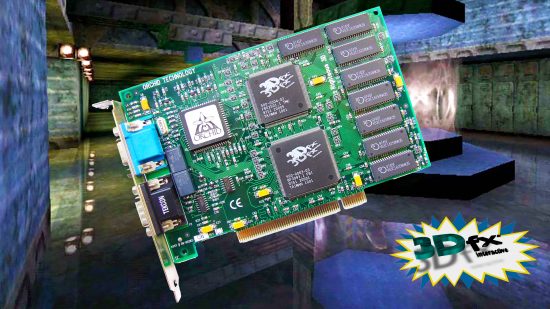The story of the 3dfx Voodoo 3D is a classic case of being the right company with the right tech at the right time. 3dfx launched its revolutionary Voodoo Graphics chipset just as fully polygonal 3D graphics hit the mainstream and PC gamers wanted an easy and accessible way to get them.
In late 1996, Quake and Tomb Raider had just been released, the Nintendo 64 was out in Japan and North America, and the Sony PlayStation and Sega Saturn were still in their first year. Reliant purely on CPU horsepower, and with no dedicated 3D hardware to back it up, the PC was beginning to lose its place as the king of gaming platforms.
Sure, it had a bunch of 2D/3D accelerator cards, but they were too damn slow to make any difference. With the Voodoo Graphics chipset, 3dfx played a bigger role than any other graphics hardware manufacturer in turning around that situation. In doing so, it made 3D acceleration an absolute, cast-iron must-have feature.
The birth of 3dfx Voodoo
3dfx was founded in San Jose, California in 1994, by a trio of ex-Silicon Graphics (SGI) employees, Ross Smith, Scott Sellers and Gary Tarolli. At the time, SGI was by far the biggest name in 3D graphics, with its enormously expensive workstations used to create the pioneering CGI effects in Terminator 2 and Jurassic Park.
What’s more, SGI was already involved in 3D gaming hardware, developing the core components for what would eventually become the Nintendo 64. At this time, however, some of SGI’s engineers were thinking that there were serious opportunities being overlooked in developing 3D hardware for PCs.
One group would eventually leave to found a company called ArtX, which would later get bought by ATi (which would then be bought by AMD). Meanwhile, Smith, Sellers and Tarolli founded a new startup, Pellucid, in 1992, with the intention of bringing affordable 3D hardware to the PC.
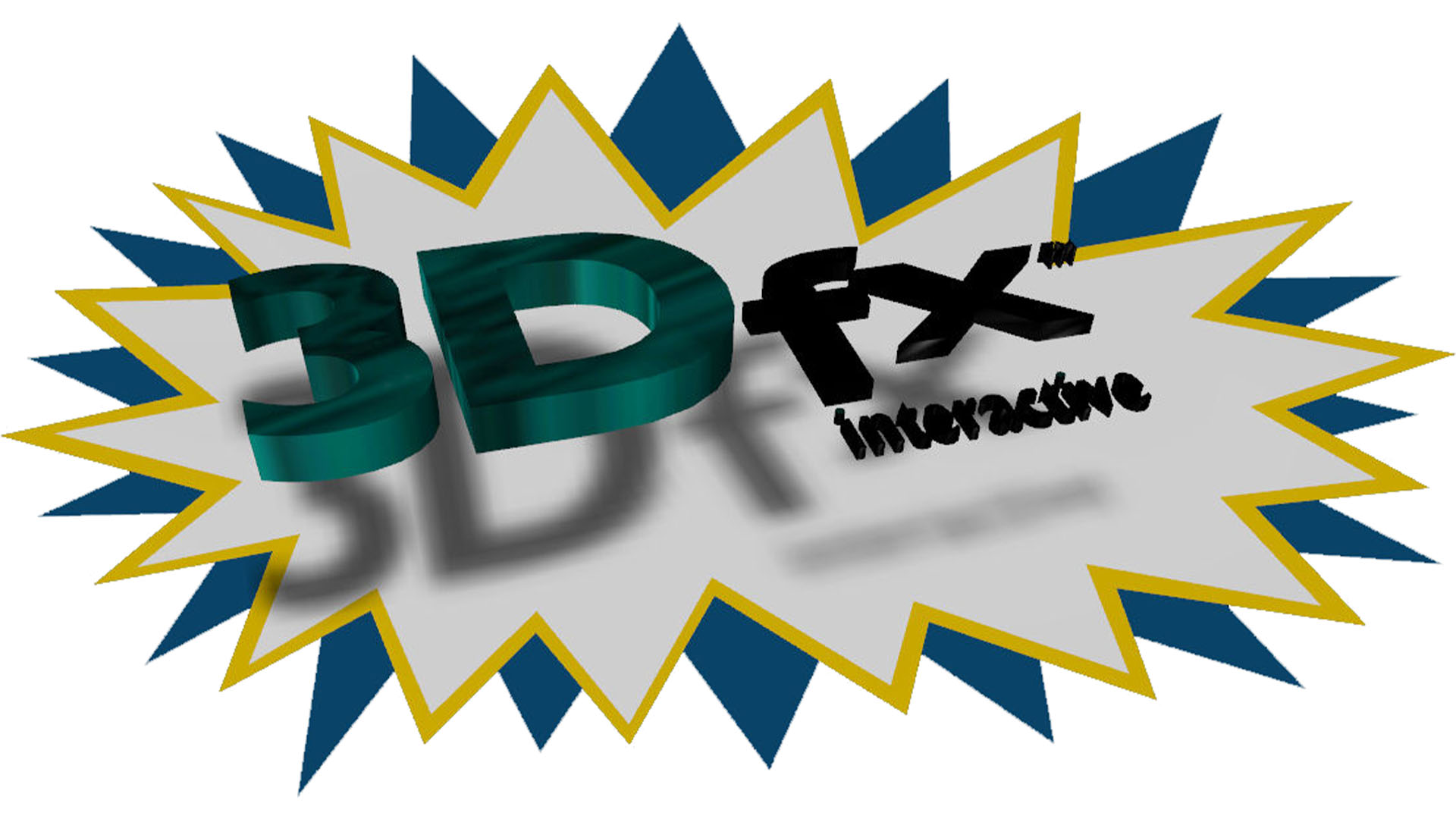
In 1993, Pellucid was bought by Media Vision, a company that had grown rich from selling multimedia kits for PCs during the CD-ROM revolution. Pellucid had proposed the design and manufacture of a PC 3D gaming chip, and Media Vision wanted some of that action.
Unfortunately, Media Vision had its own (mostly legal) issues, and went out of business. However, just when the situation looked bleak, Scott Sellers met Gordon Campbell, founder of the pioneering graphics chip manufacturer, Chips & Technologies. Campbell asked the trio what they wanted to do, and helped them to find the venture capital to do it.
With Smith working as vice president of sales and marketing, Sellers and Tarolli used all the know-how they’d built up at SGI and Pellucid to design a cost-efficient 3D architecture built specifically to handle the polygonal rendering pipeline used in 3D games.
With Sellers working on the hardware and Tarolli on the core algorithms, the 3dfx team came up with the idea of an add-in card that only accelerated 3D, and left 2D graphics and Windows acceleration to a separate graphics card. At first, all they had working was a software simulation built in C and running on a Pentium 90 processor, but this evolved into a card based on two heavily optimized processors.
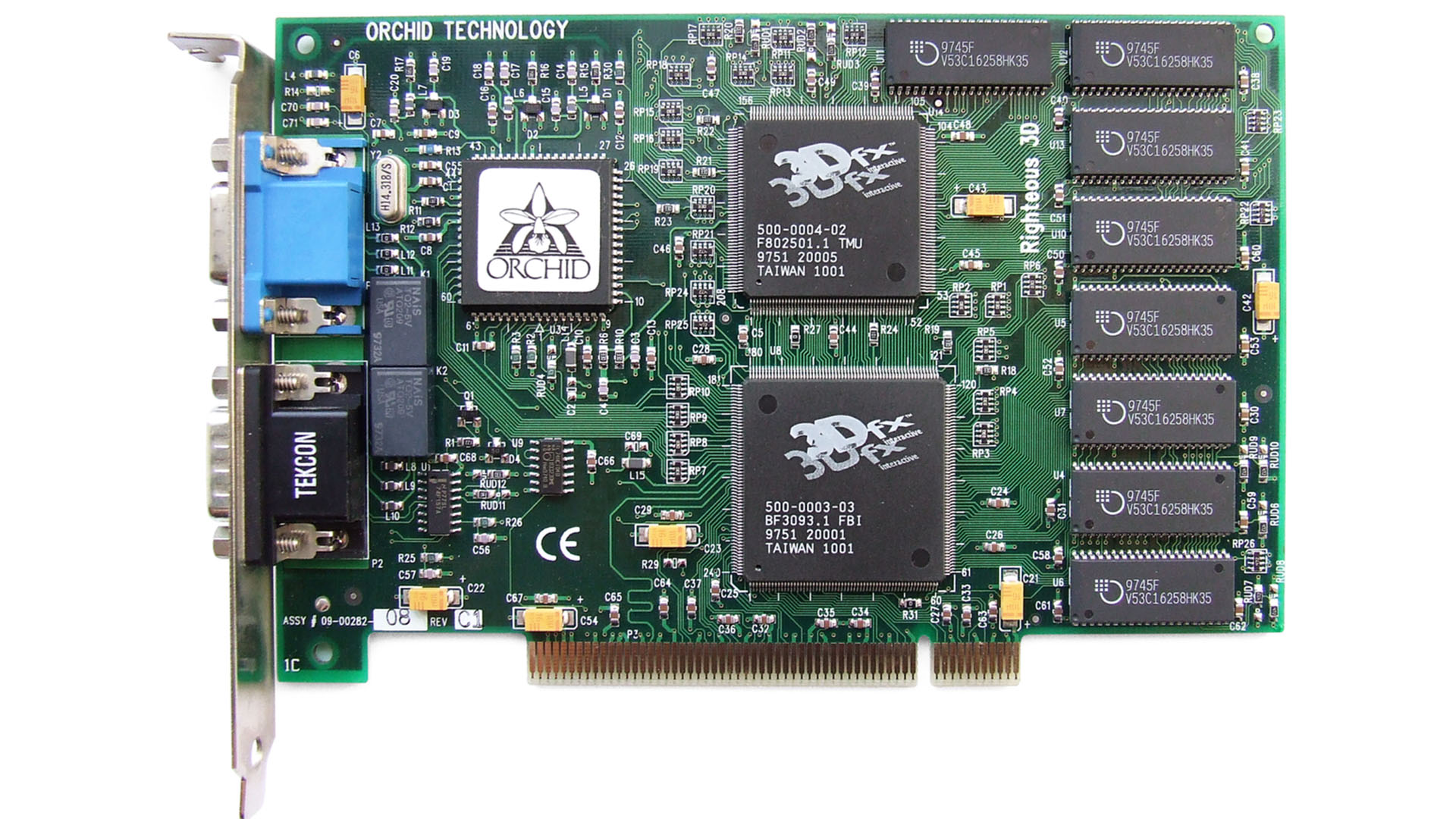
The Orchid Righteous 3D was one of the first Voodoo boards to hit the market, along with Diamond’s mighty Monster 3D
The first, the Frame Buffer Interface, took polygon scene data from the CPU and applied Z-buffering and Gouraud shading, tracking which polygons were visible, and ensuring that only those were drawn and filled, then applying shading to provide an impression of simulated light and color.
Each frame of the image would then be converted into scan lines from top to bottom, then sent on to the second chip. The Texture Mapping Unit, or T-Rex as it was known, applied perspective-correct textures, complete with mipmapping (the process of using smaller, less-detailed textures as an object gets further away) and bilinear or trilinear filtering (smoothing out blocky textures when displayed at their largest size close to the viewpoint).
What’s more, the T-Rex supported alpha blending, for convincing transparency effects. No other consumer-grade graphics hardware was able to handle this at the time. Each chip worked with its own frame buffer or texture memory – a bank of 2MB of high-bandwidth (for the time) EDO RAM, and the resulting scanlines were fed out to a DAC, which output to a good, old-fashioned analog VGA output.
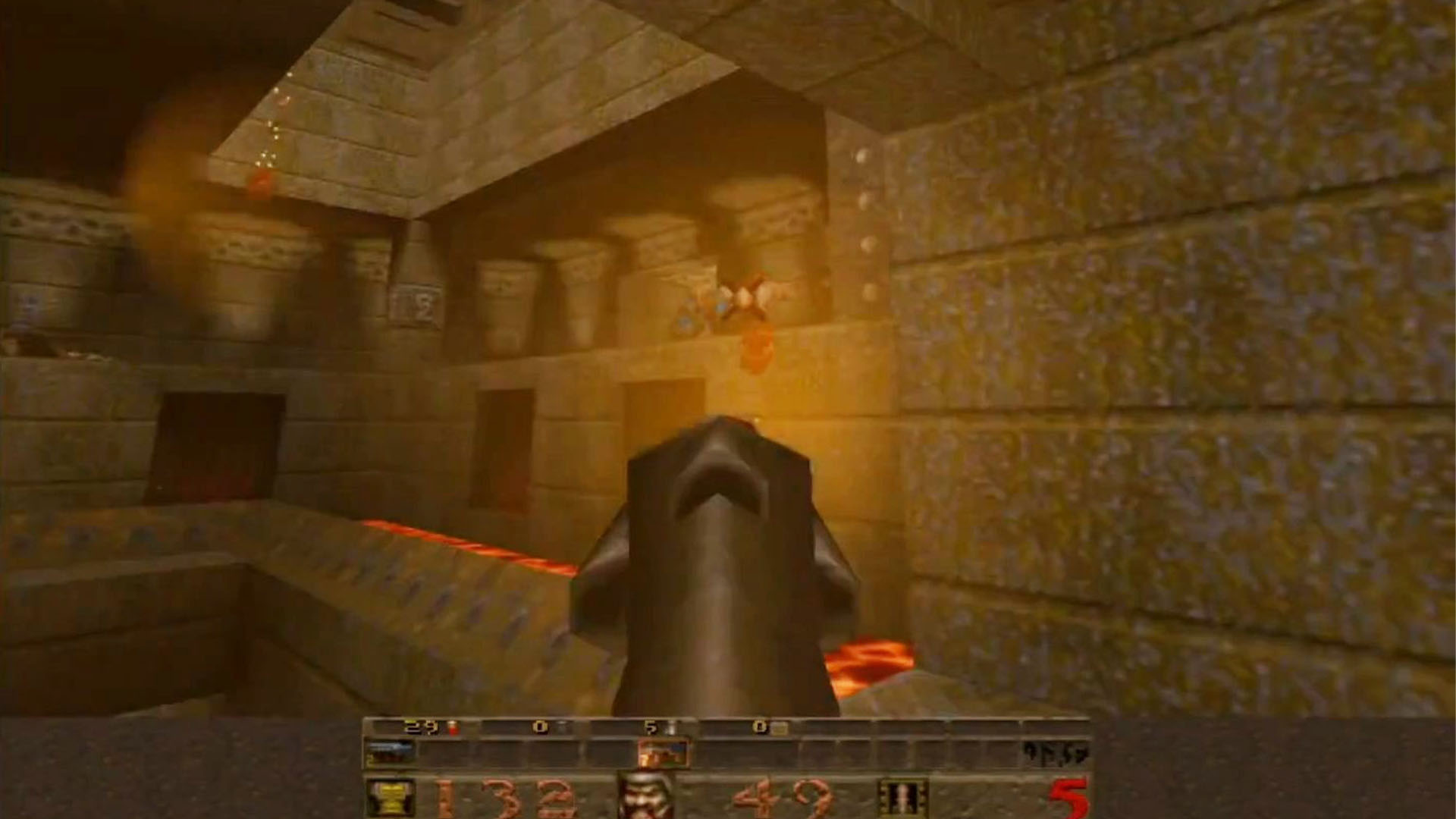
GLQuake delivered the killer 3dfx app. You could play id’s cutting-edge 3D title at 640 x 480 in 16-bit color at a smooth 30fps
The first 3dfx Voodoo cards
The fact that the Voodoo Graphics chipset was 3D-only helped to keep down the price, but it did make using the card a little strange. While the card itself could talk to the CPU and system RAM through the PCI bus, it worked in tandem with an existing 2D graphics card for 2D DOS and Windows acceleration, only taking over when there were 3D graphics to be rendered.
This happened through a D-Sub pass-through cable running from the output of the 2D card to an input on the Voodoo Graphics card. While some 3dfx cards handled the switching electronically, others actually had a mechanical switch. On these, you could literally hear when the Voodoo Graphics card kicked into action.
3dfx never manufactured its own 1st-generation cards. Instead, the designs and chips were sold and licensed to third-party manufacturers, with Diamond and Orchid first out of the gate with the Monster 3D and Righteous 3D in late 1996. These first cards sold for approximately $350, which was a lot but not exorbitant for a PC graphics card at the time.
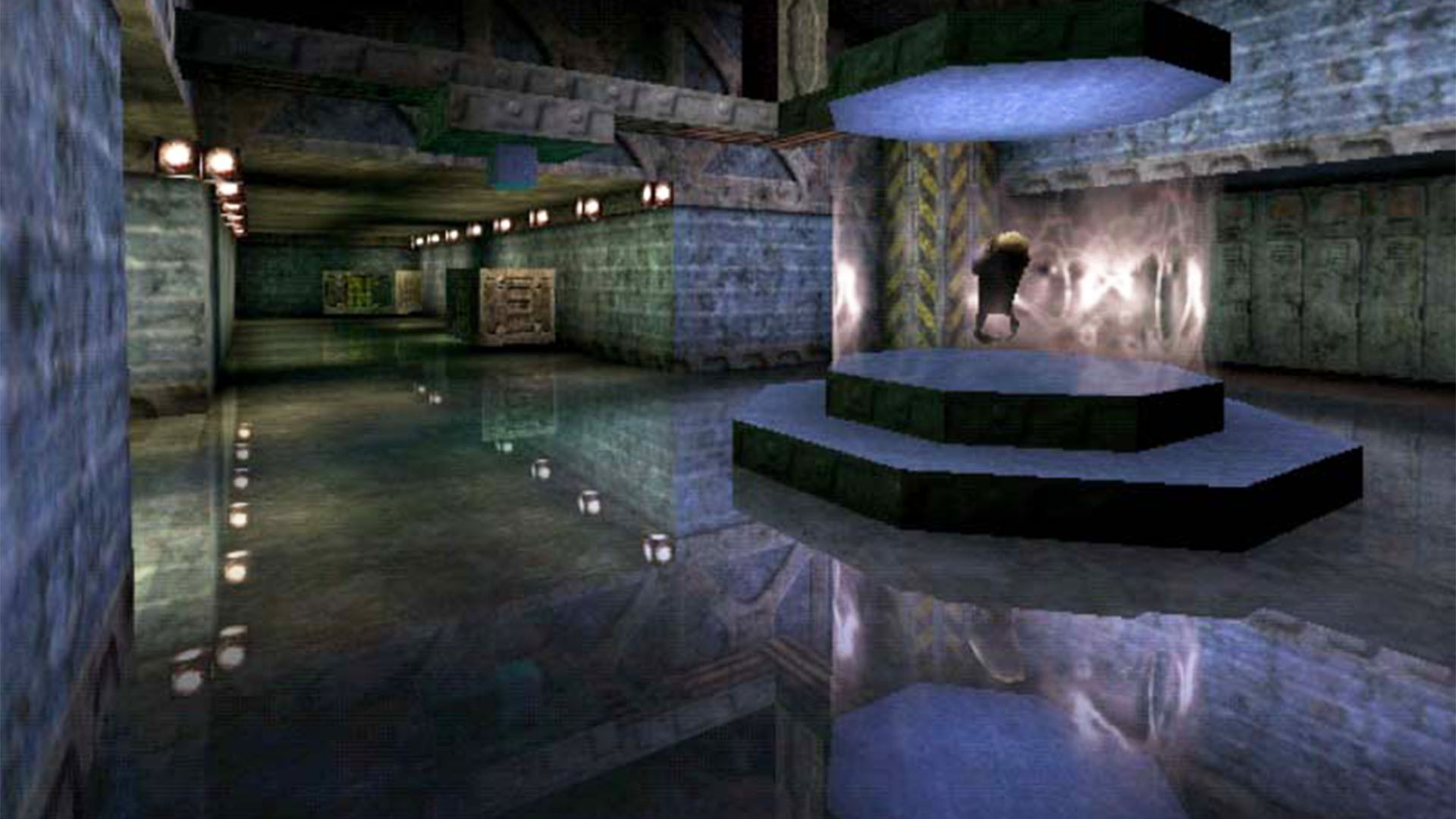
By the time Unreal hit the market, 3dfx was established as the best tech to run it. Check out those shiny surfaces and lavish textures
What’s more, these beauties could perform amazing feats with even fairly modest PC configurations. At a time when even Intel’s Pentium 133 processors were struggling to deliver consistently good frame rates with the standard software renderer in some demanding games, you could slot a Monster 3D into your Pentium 90 system and see great-looking, silky-smooth visuals.
Yet 3dfx’s work went beyond designing the architecture to creating an API that enables game developers to support the card. At the time, there were no 3D engines that supported 3D hardware and no standard APIs for developing 3D games. OpenGL was focused mainly on CAD and workstation graphics, while Intel was unwilling to release its new 3DR rendering library for use on hardware that would run DOS games. Microsoft had yet to develop what became Direct3D.
As a result, 3dfx developed its own API, GLide. This was based on OpenGL, so it wasn’t unfamiliar to experienced 3D developers, but it pared back the calls and instructions to focus on those used in real-time 3D games.
To show off Glide’s capabilities, 3dfx didn’t just have its own internal demos, but a range of Atari and Midway arcade games, including the racer, San Francisco Rush, and the beat-’em-up, Mace: The Dark Age. These ably demonstrated what the new hardware could do. All that was needed were some suitably awesome PC games.
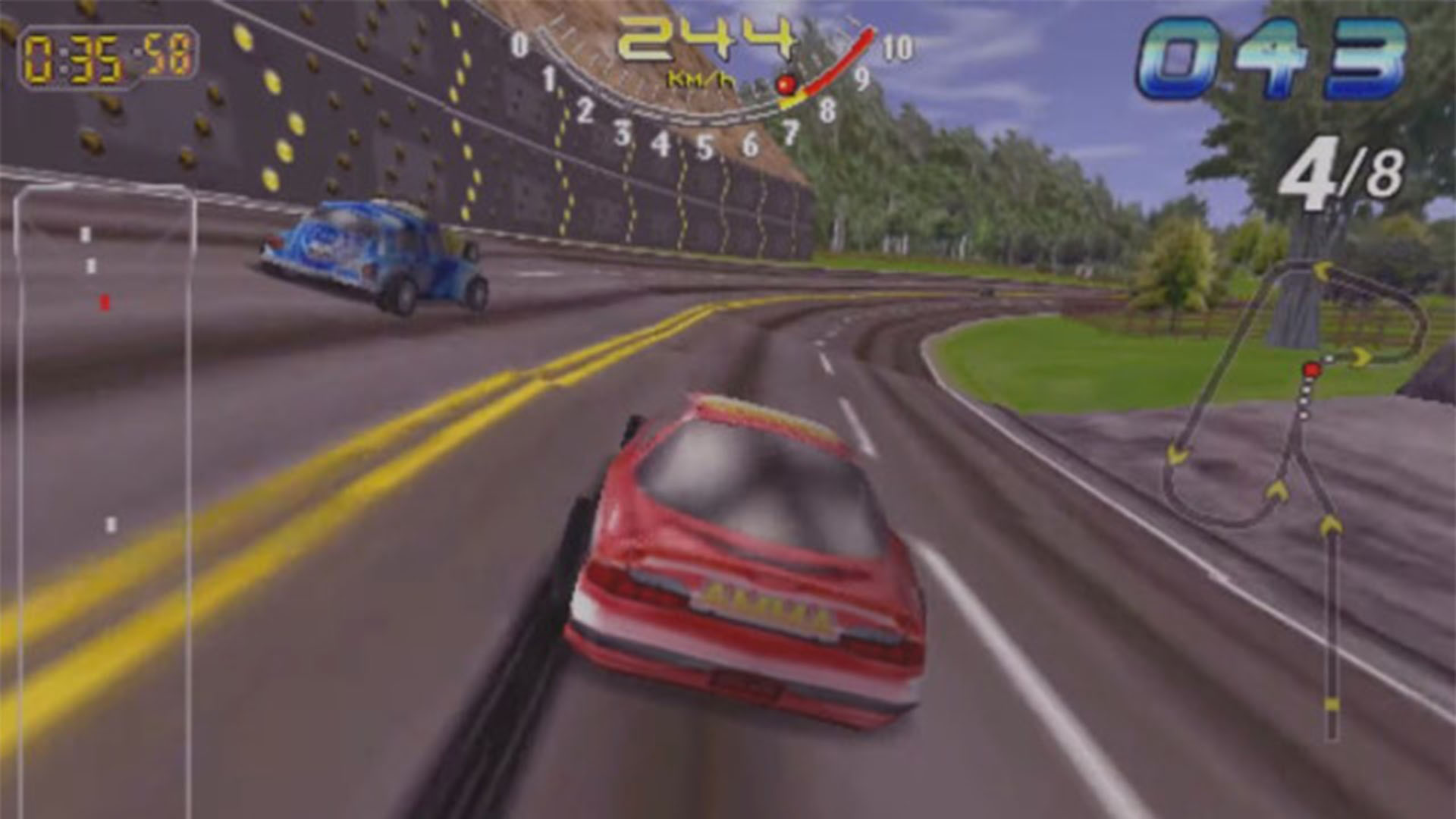
Before 3dfx hit the home run, it made a splash in the arcades, powering Midway/Atari games such as San Francisco Rush
The best 3dfx Voodoo apps and games
This was 3dfx’s one problem at launch. The technology itself was impressive, and the cards came with some decent demos, including a slick 3D combat demo, Valley of Ra, which featured amazing reflective surfaces and Gouraud-shaded characters, and a stunning dolphin sim, Grand Bleu. Orchid and Diamond took them around to show to eager PC journalists, and jaws consistently hit the floor, but there still wasn’t a killer app.
At this point, the early 2D/3D graphics cards all tended to support the same games, and we’d got used to seeing the likes of Descent 2, Actua Soccer, Terminal Velocity and MechWarrior 2 with only mildly improved, filtered 3D textures running at frame rates that barely climbed above what you could get with a software renderer. The Voodoo 3D ran these games faster at higher resolutions, but nobody was going to pay $350 for that.
Luckily, 3dfx soon had two absolute bangers. The first was Tomb Raider. Lara Croft’s debut was already one of the most stunning-looking games around on the Sega Saturn, Sony PlayStation and PC, but the pixelated, low-resolution graphics meant that you weren’t seeing it at its best.
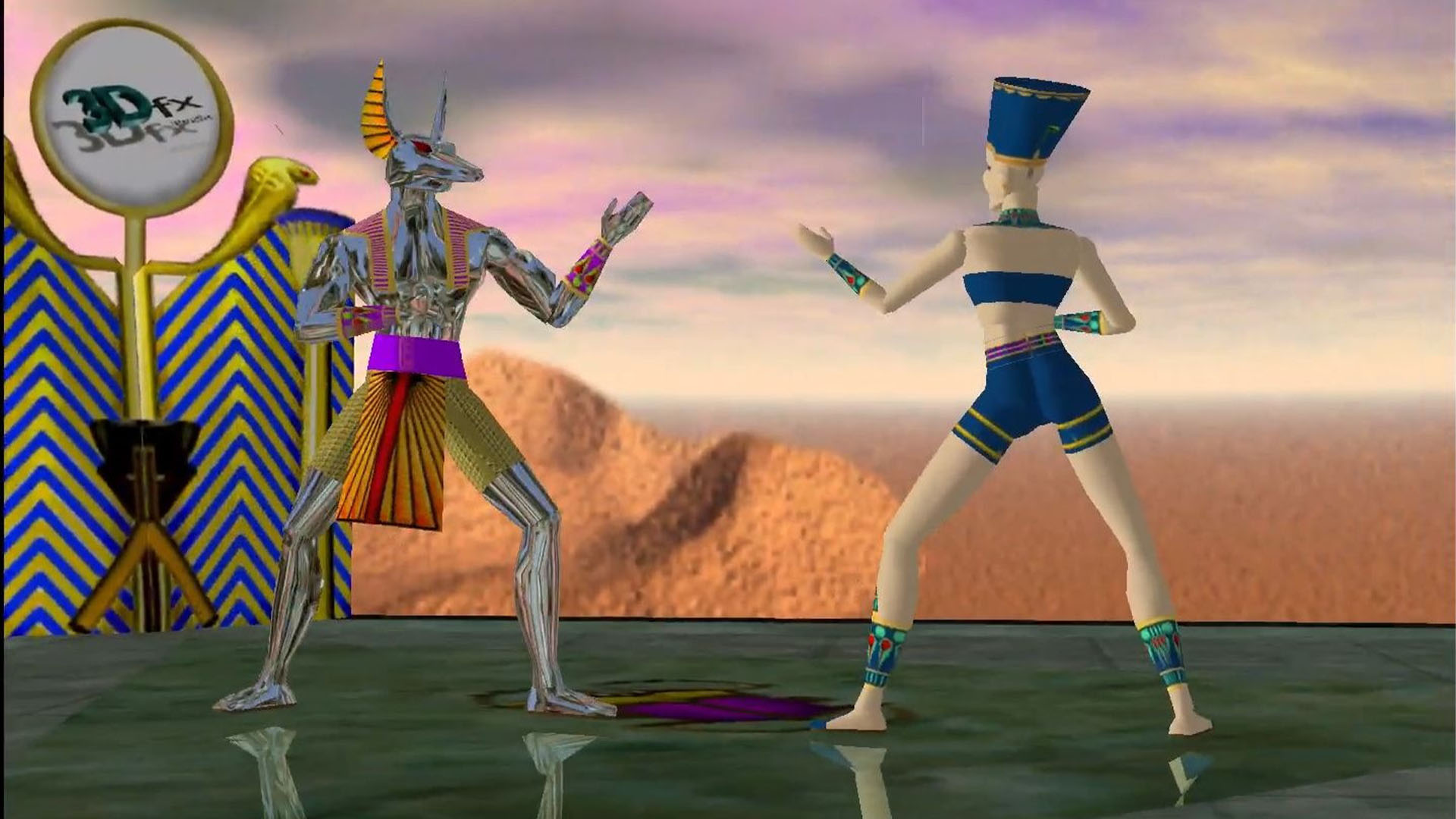
With its high-res models and reflective surfaces, 3dfx’s lead tech demo, Valley of Ra, was a jaw-dropper. Nobody had seen anything like this outside of Sega’s Virtua Fighter arcade games
However, just a few months after launch, the publisher, Eidos, released a patch that allowed you to run Tomb Raider under GLide. The effect was amazing, not only smoothing out the blocky textures and adding transparent water, but allowing you to play the game at a 640 x 480 resolution at close to 30fps. You saw it and you wanted Voodoo in your life.
An even more impressive transformation awaited us with id Software’s Quake. I first played Quake on a Pentium 133 laptop with 16MB of RAM, and the game was only just playable at a 360 x 240 (or half SVGA). And when I say playable, I mean the right side of 20fps.
Then 3dfx released MiniGL, a cut-down version of OpenGL designed to handle just the functions used in Quake – id responded with a port of the game, GLQuake, which could take advantage of the MiniGL wrapper. The port had its problems, including gloomy brightness levels, but the bilinear-filtered textures went from looking slightly rough to looking awesome, and you could now run the game at 640 x 480 in glorious 16-bit color and still hit 30fps.
Serious PC gamers saw Quake running unaccelerated and then accelerated, then voted with their wallets. Sure, the new Pentium MMX CPUs released in 1997 could run the game at a decent lick, but did it look as good as Voodoo? Not even close.
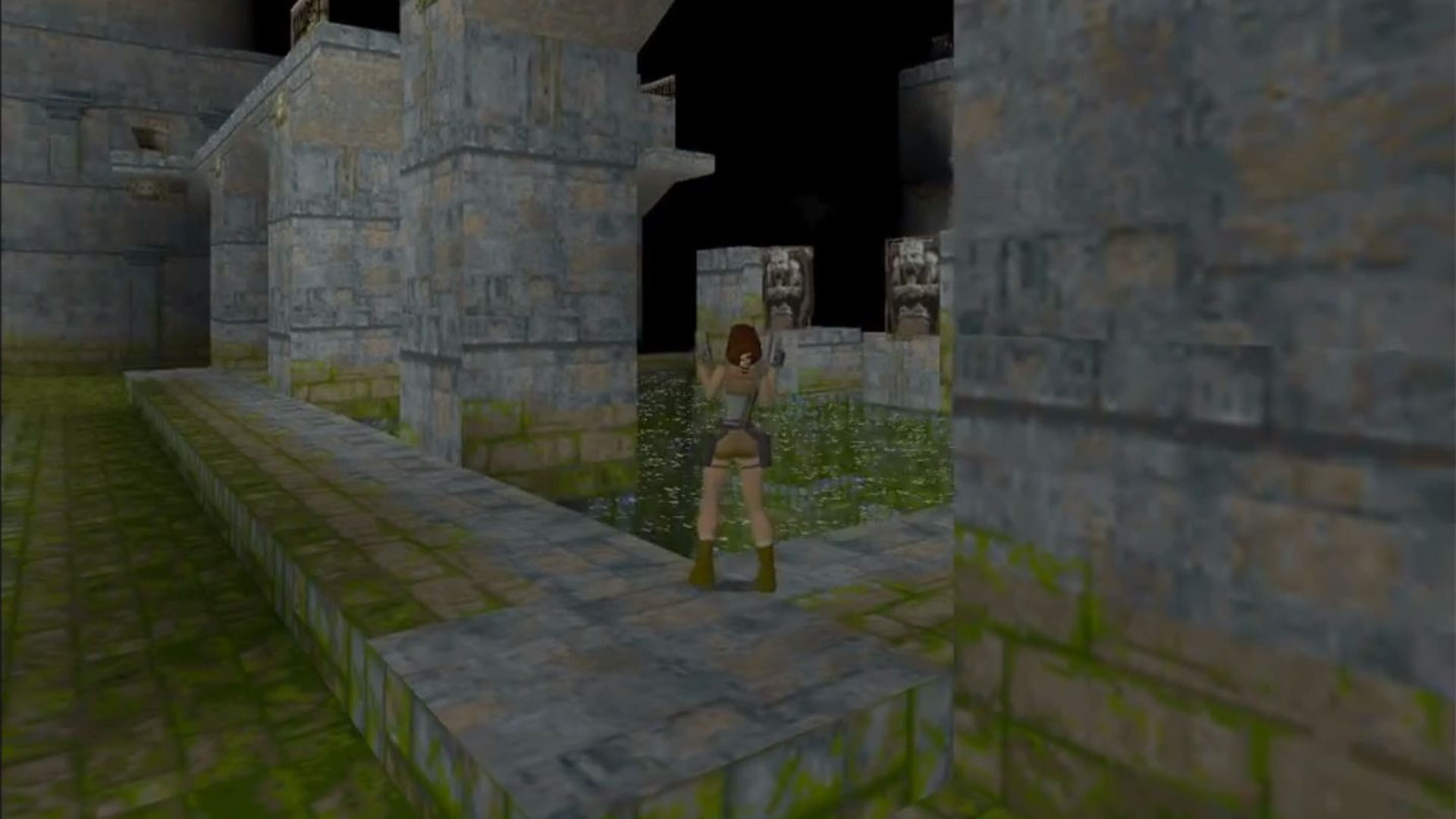
Tomb Raider was a 3dfx showcase, smoothing out the blocky textures, improving frame rates and adding transparent water to the mix
GLQuake sold 3dfx cards, and a growing user base boosted game support. True, 3dfx had rivals. Videologic’s PowerVR tech was affordable and efficient, but it also used an unconventional tile-based rendering pipeline and needed a faster CPU to get the best out of it. Rendition’s Verite chipsets looked promising, but were too pricey and struggled with their 2D performance.
3dfx grew to become a kind of de facto standard just as the next wave of 3D games started taking off. From Need for Speed II SE to Myth: The Fallen Lords, Shogo: Armor Division and Unreal, Voodoo Graphics made the best-looking games of the era look even better and run at what seemed incredible speeds. The PC was back on top as the most technologically advanced gaming platform of the era.
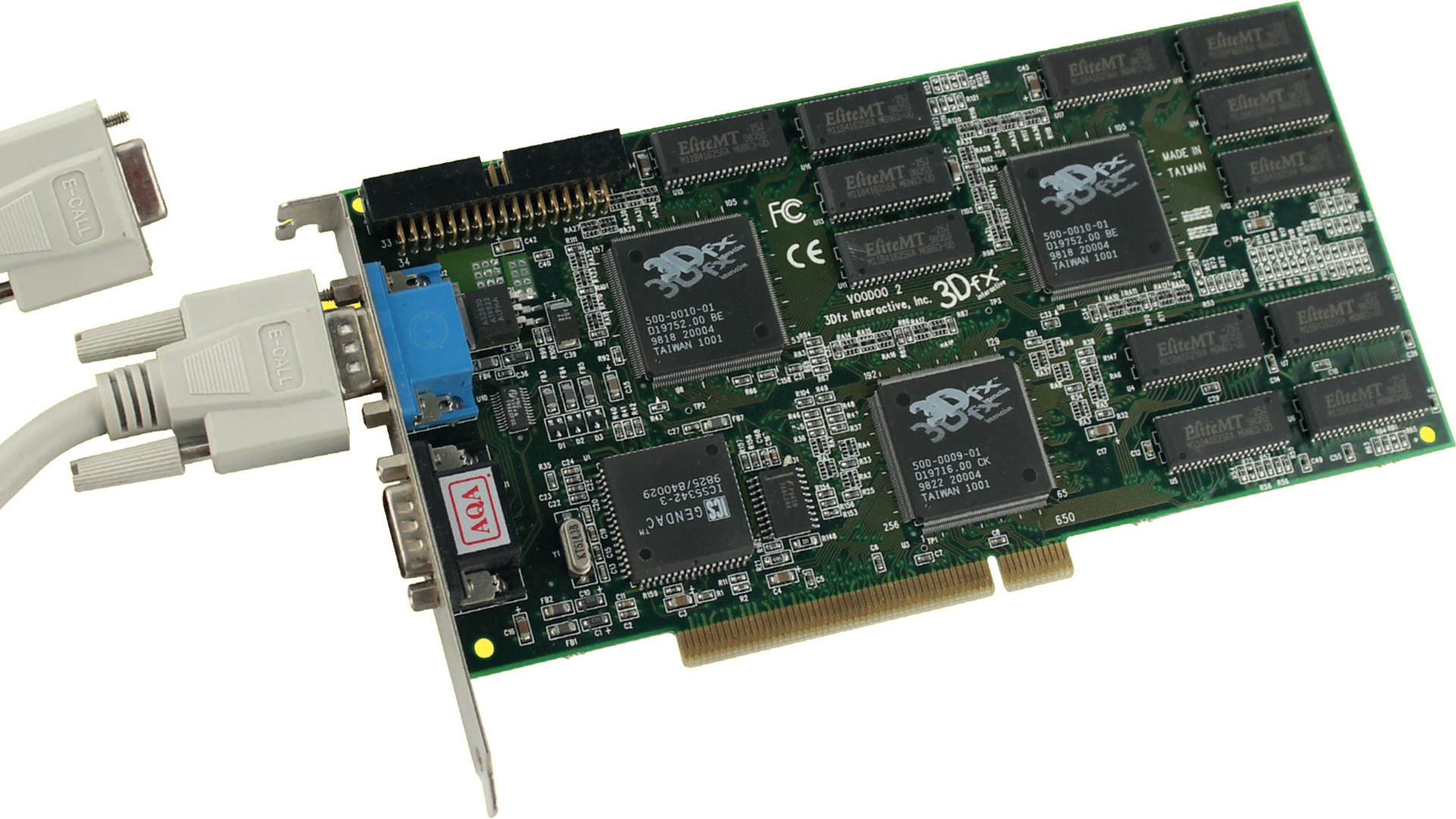
3dfx continued through a glorious period. Its 1997 Voodoo Rush 2D/3D graphics chipset was admittedly a dud, suffering from a lack of memory bandwidth and sync issues with the onboard 2D graphics chip. However, 1998’s 3dfx Voodoo2 was a worthy successor, arriving just a few months after another iD showcase, Quake II.
This purple period wasn’t to last, as GLide fell out of favor and ATi and Nvidia delivered high-performance all-in-one graphics chips, such as the Nvidia Riva TNT and ATi Rage but we owe 3dfx a huge amount for bringing 3D power to the PC when it needed it most – and helping to show the world the full potential of hardware-accelerated 3D graphics.
Fast forward to today, and 3dfx is of course no longer with us, but ray tracing is arguably having a similarly transformative effect on PC gaming visuals as the first 3D cards. If you’re looking to upgrade to one of the latest Nvidia or AMD GPUs, make sure you read our full guide to the best graphics card, which covers the best options at a range of prices. One of our current favorites from the firm that ended up buying out 3dfx is the Nvidia GeForce RTX 4070.
We hope you’ve enjoyed reminiscing with us about the early days of 3D graphics acceleration in the 1990s. For more articles about the PC’s vintage history, check out our Retro tech page, and if you love a bit of 3dfx nostalgia, take a look at this recreation of the never-released 3dfx Voodoo5 6000.
